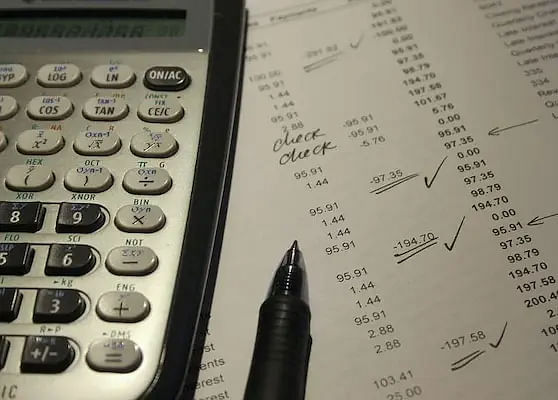CAT DI questions with solutions can help aspirants get an insight into what kind of questions are asked in the exam. Aspirants must solve a variety of questions to ace the CAT exam with a high percentile.
DI is a high-scoring but challenging part. Data Interpretation, as the name implies, requires you to interpret given data in the form of charts, graphs, tables, diagrams, symbols, and so on to answer a series of linked questions.
The key to answering CAT Data Interpretation (DILR) questions is to comprehend the fundamentals of mathematics and have a strong command of calculation. However, simply having great arithmetic skills is insufficient. You should practice solving DI sets within the time limit. Read on to learn more about CAT DI questions with solutions.
Top CAT Data Interpretation (DI) Questions with Solutions
Some of the top CAT DI questions with solutions have been discussed below:
Q1. Below graphs show information on the price and production of crude oil for 1973-80. In Graph 1, the lines show the prices of crude oil per barrel for domestic production vs imports, while the bars illustrate the domestic price as a percentage of the import price. In Graph 2, the bar illustrates the average production of barrels per day in the US and Non-OPEC countries, whereas the line shows the oil consumption in the US.

Based on the graphs and information provided above, answer the following parts:
(a) In 1979, what was the US's total cost of imported crude oil?
| Option A | Option B | Option C | Option D |
| $ 296,800 per day | $ 455,800 per day | $ 251,550 per day | $ 376,300 per day |
Answer: (C) $ 251,550 per day
(b) What is the percentage change between the price of imported oil and domestic oil in 1976?
| Option A | Option B | Option C | Option D |
| -9.95 | 2.55 | 1.25 | -19 |
Answer: (A) -9.95
(c) What is the difference between the total cost of domestic production and imported crude oil by the US in 1975?
| Option A | Option B | Option C | Option D |
| $ 96,750 per day | $ 49,500 per day | $ 65,625 per day | $ 65,626 per day |
Answer: (C) $ 65,625 per day
Q2. The below table (A & B) shows the number of hit movies by Bollywood actors & actresses in the past 5 years.
Table A:
| Actors | 2022 | 2021 | 2020 | 2019 | 2018 |
| Shah Rukh Khan | 1 | 0 | 2 | 1 | 1 |
| Vivek Oberoi | 1 | 2 | 0 | 0 | 1 |
| Akshay Kumar | 0 | 0 | 1 | 1 | 0 |
| Hrithik Roshan | 0 | 1 | 1 | 0 | 1 |
| Salman Khan | 1 | 0 | 1 | 0 | 1 |
Table B:
| Actors | 2022 | 2021 | 2020 | 2019 | 2018 |
| Aishwarya Rai | 2 | 0 | 1 | 0 | 1 |
| Rani Mukerji | 1 | 1 | 0 | 1 | 0 |
| Preity Zinta | 0 | 1 | 1 | 1 | 0 |
| Madhuri Dixit | 0 | 1 | 0 | 0 | 1 |
| Others | 0 | 0 | 3 | 0 | 2 |
- Aishwarya Rai has never worked with Shah Rukh Khan, and all hit movies of Shah Rukh Khan have been with only two actresses.
- Akshay Kumar has only worked with Rani Mukerji.
- Vivek Oberoi has worked with only established actresses.
Solve the following questions:
(a) Shah Rukh Khan’s two hit movies in 2020 were with which actresses?
| Option A | Option B | Option C | Option D |
| Aishwarya Rai & Others | Aishwarya Rai & Preity Zinta | Rani Mukerji & Madhuri Dixit | Preity Zinta & Others |
Answer: (B) Aishwarya Rai & Preity Zinta
(b) Hrithik Roshan’s hit movies have been with which actresses?
| Option A | Option B | Option C | Option D |
| Rani Mukerji & Preity Zinta | Aishwarya Rai & Rani Mukerji | Aishwarya Rai & Madhuri Dixit | Preity Zinta & Others |
Answer: (D) Preity Zinta & Others
(c) Which actor/actors had the highest number of hit movies with “other” actresses?
| Option A | Option B | Option C | Option D |
| Hrithik Roshan | Akshay Kumar | Shah Rukh Khan | Hrithik Roshan & Shah Rukh Khan |
Answer: (D) Hrithik Roshan & Shah Rukh Khan
(d) Madhuri Dixit’s two hit movies in the past 5 years have been with which actor?
| Option A | Option B | Option C | Option D |
| Vivek Oberoi & Hrithik Roshan | Vivek Oberoi & Salman Khan | Vivek Oberoi & Shah Rukh Khan | Vivek Oberoi |
Answer: (D) Vivek Oberoi
Also Read: How to Improve Reading Comprehension for CAT Exam?
Benefits of Solving CAT DI Questions
Solving CAT DI questions will help you understand the paper's exam pattern and marking scheme. Below are some other benefits of solving plenty of DI questions:
- DI questions are a bit tricky and require practice. Solving a variety of questions can build confidence.
- Solving CAT DI questions will help aspirants to understand the difficulty level of the paper so that they can prepare accordingly.
- By solving CAT DI questions, aspirants will develop an interest in the topic, which will lead to score high marks.
- Data Interpretation & Logical Reasoning (DILR) is a high scoring section, and by solving questions, you will get familiar with the exam pattern.
Also Read: How to prepare for CAT Personal Interview?
Refer to the CAT DI preparation tips below to achieve high marks:
- Keep Practising: You should keep practising CAT DI questions to build your confidence and reduce the chances of errors in the exam.
- Time Management: Practising CAT Data Interpretation questions reduces the time of attempting questions. The more you practise questions, the more easily and faster you’ll be able to solve questions.
- Study Plan: Creating a study plan is very important as CAT is a highly competitive exam, and covering the syllabus on time is necessary to achieve a high percentile.
- Organising Data: DI questions require you to answer through data, so you must be able to organise and analyse data from the graph/table/charts, etc.
- Avoid Silly Mistakes: Before rushing to answer CAT DI questions, one should understand the question first and then proceed towards answering the question.
- Exam Day Planning: You are advised to carry all the mandatory documents such as Photo ID, CAT exam Admit Card 2025 etc and reach there exam centres on time.
Also Read: Last Minute Preparation Tips to Score 90+ Percentile in CAT 2025
CAT DI & Logical Reasoning Important Topics
Following table contains important topics associated with the CAT Data Interpretation & Logical Reasoning section:
Data Interpretation & Logical Reasoning (DILR)
- Bar Graphs
- Column Graphs
- Line Charts
- Pie Chart
- Venn Diagrams
- Tables
- Seating Arrangement
- Calendars
- Cubes
- Clocks
- Binary Logic
- Blood Relations
- Caselets
- Syllogism
- Number and Letter Series
Also Read: CAT Normalisation Process























